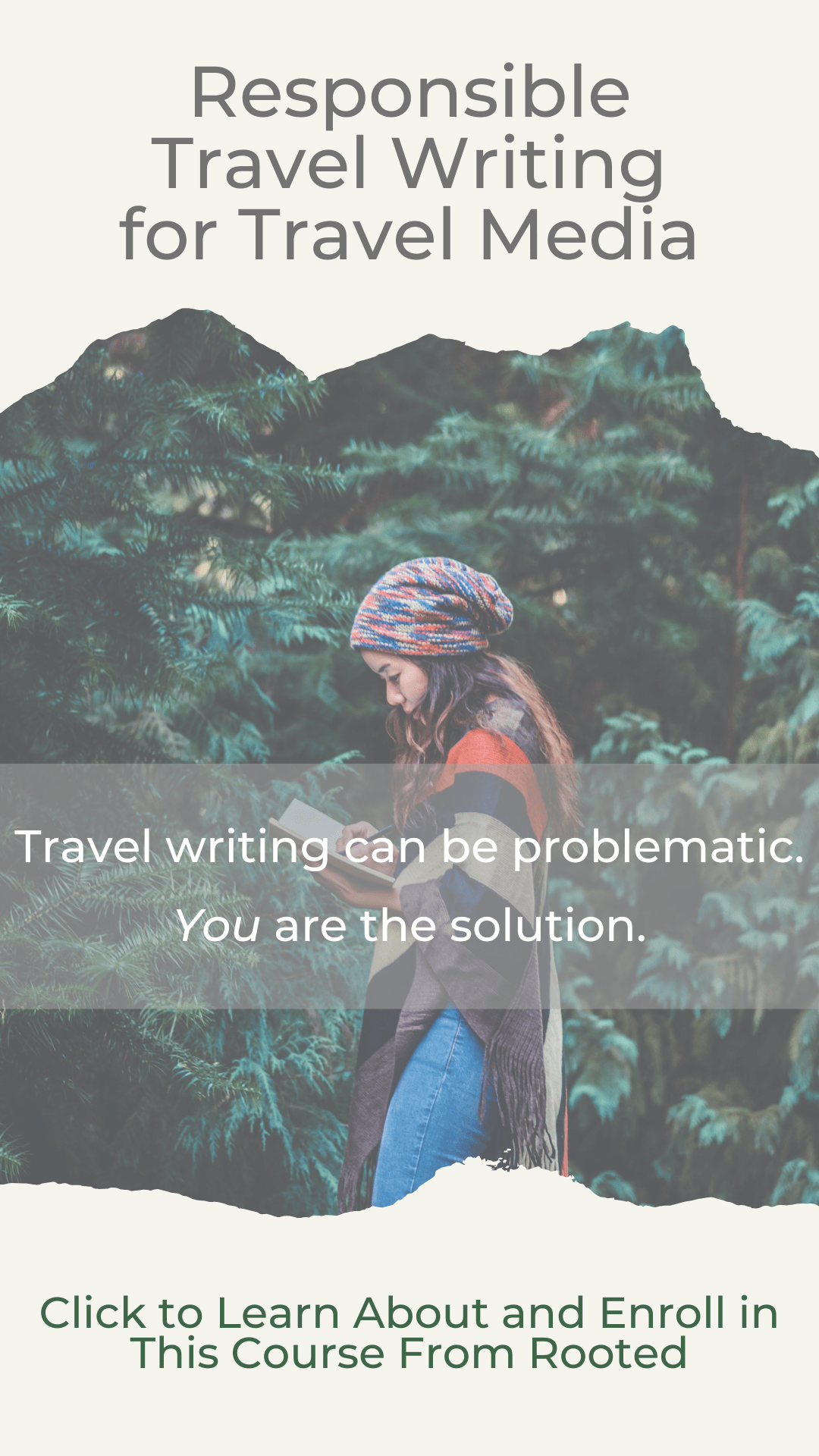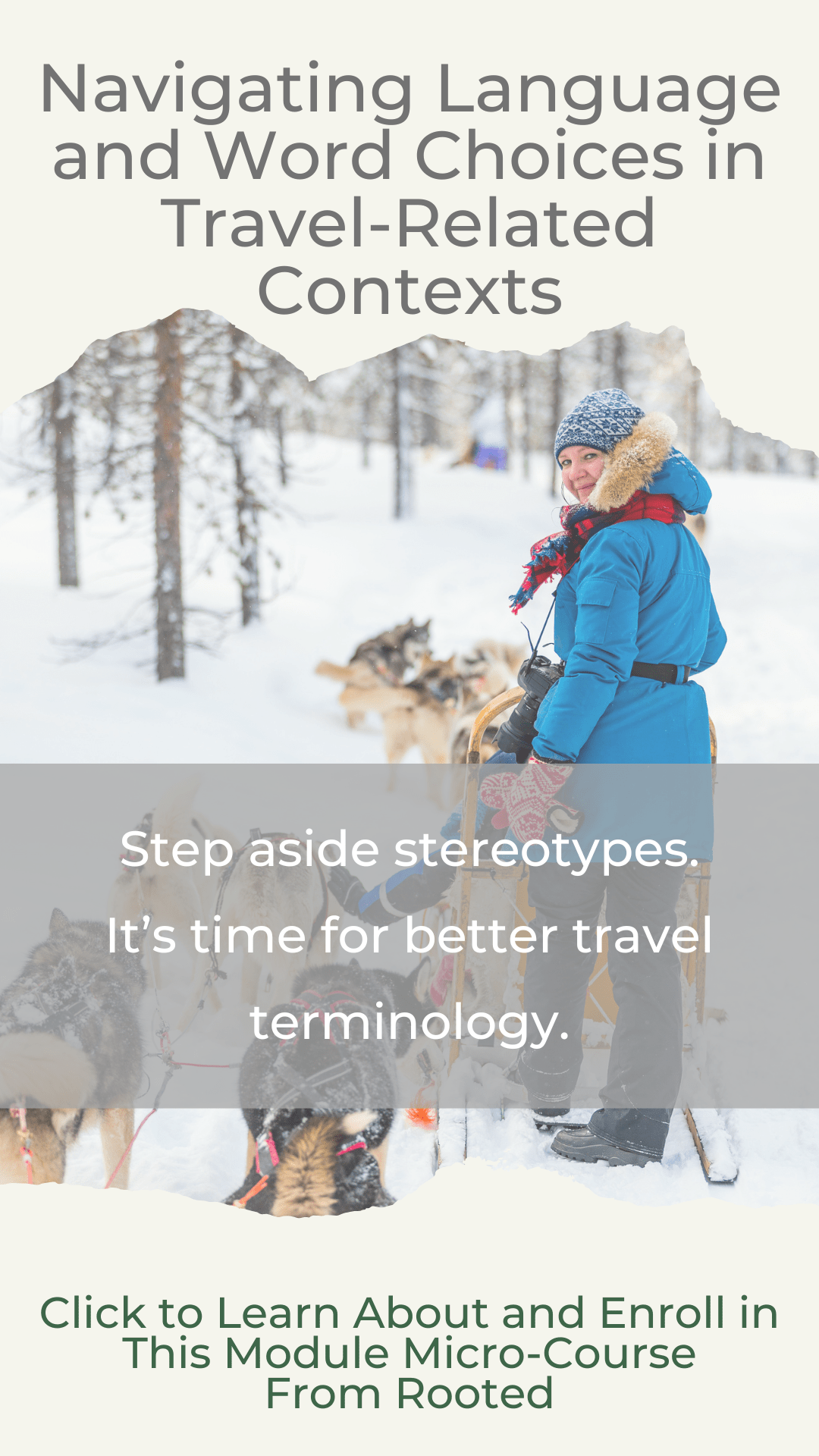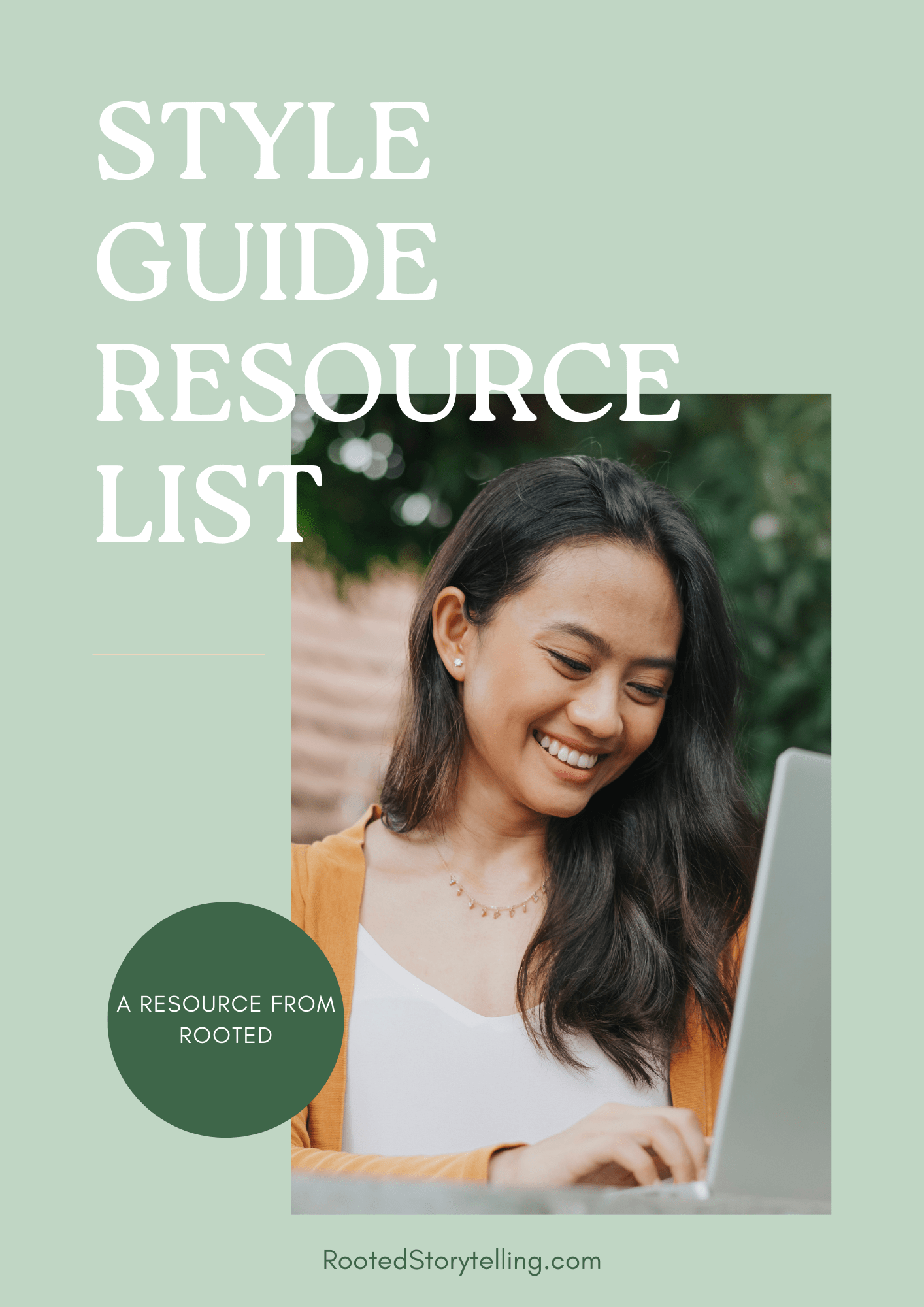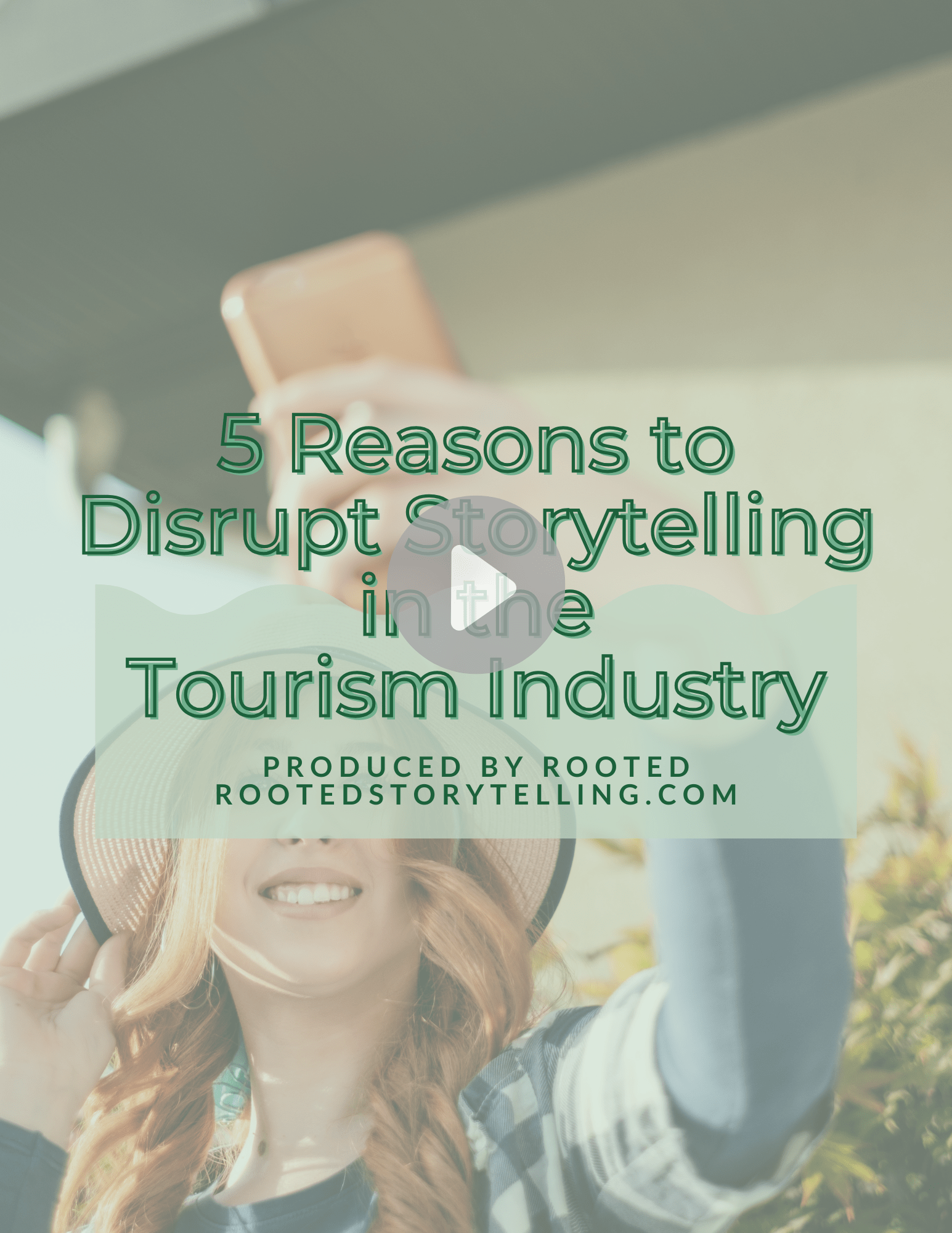If you work in tourism, you work in a storytelling business. But that doesn’t mean being a travel storyteller is easy…
First, you must uncover those interesting details, magical moments, and notable encounters that make a place and experience unique. Then, you must find a way to share them so they educate, inspire, and motivate others.
Beyond Creating the Responsible Tourism Marketing Strategy or Writing Travel Content
While uncovering those noteworthy travel stories is a good start, it's not enough simply to encourage others to follow in your footsteps as if it’s a blueprint. You need to craft these travel stories in a way that encourages others to follow in your footsteps while also showing respect, behaving properly, being aware of cultural norms, having appropriate expectations, and, hopefully, becoming a slightly better global citizen in the process.
This applies whether you’re a destination representative creating travel content for your website, an experience provider sharing insights into offerings on social media, or a travel journalist writing for a traditional media outlet. It’s true whether you’re crafting a story with words, images, video, or some other means of storytelling.
Storytelling across the tourism industry takes all forms, but it should also be done with intention.
Why Guiding Questions Support Responsible Travel Storytelling
Travel content has a long, problematic history. The stories crafted, shared, and reinforced in tourism have largely been told from the perspective of people who are white, wealthy, from the Global North, and in positions of power. This means they’ve not only left out important perspectives, but sometimes they’ve been shared in a way that harms other people and the places they call home.
There is a need to tell better stories across the tourism spectrum. Luckily, there has been an evolution to incorporate more stories from different perspectives highlighting different aspects of people and places woven into tourism experiences. In doing this, though, there is a danger of using storytelling in a way that causes harm.
That is why, regardless of how and why you’re shaping and sharing stories in the tourism space, it’s important to check in before diving in. The job of crafting a travel story comes with great responsibility. But you’re also very capable of doing it. These six questions can help guide your way.
Guiding Questions for Telling, Sharing, and Writing Travel Stories
1. What is my intention for crafting this story in this way?
Of all the compelling stories in the world, there must be a reason why this is the story you chose to pursue.
Travel-related stories are notoriously focused on the traveler, largely because tourism has historically centered their needs and desires in destination management, product development, and marketing communications. In travel media, readers (i.e. media consumers, who are also potential travelers) are the main audience, and a content creator’s goal is often to invite them in so they can picture themselves walking through the narrative being told.
It is because tourism is so heavily traveler-focused that intention must carefully be considered. Any stories that feature local residents, their cultures and traditions, and the places they live (the “destination”) also have the potential to convey inaccurate representations, create inaccurate expectations, and commodify and exoticize those very people and places you hope to celebrate.
This is why it is also important to reflect upon both the intention of the story and the impact of the story’s pieces (such as the words, images, framing, etc.) as well as the story in its entirety. Long after your story is shared with the world, its consequences will live on.
Additional questions for clarifying intention when writing a story:
- Why do I want to tell this story?
- Who am I telling this story for?
- Have I thought about how consumers of this story will approach it?
2. Have I provided appropriate context?
A single story is completely contained within the confines of its words or images. Each person has a unique perspective they carry with them when they encounter your story, but there’s no way to know what that is. It’s possible your content’s consumers have visited the destination where your story takes place, but they may never have heard of it. It’s possible your content’s consumers are familiar with this particular landscape or cultural aspect or social norm – or this could be entirely new information. This is all to say, it is never safe to assume that a content consumer knows or believes anything beyond what you’ve shared with them.
Travel experiences do not exist within bubbles. They inherently bump up against the “real world.” Because people don’t know what they don’t know, it’s up to you to provide essential context so people can understand the “greater story” beyond your story.
This context can take a lot of different forms: Cultural context might explain why traditional dress is being worn and under what circumstance local people wear this clothing. Environmental context might explain how the climate crisis has changed a landscape through which a hiking trail traverses. Social context might explain how the emergence of boutique hotels has changed the lives of local people.
It’s easy to get carried away with additional context. Including a certain piece of information can quickly spiral into a need to answer countless other questions. However, try to keep your focus within the confines of your story. Envision how people without any insight might interpret this story. Ask yourself what else they need to know in order to make appropriate, informed travel-related decisions and/or walk your steps through the narrative with integrity.
Additional questions to evaluate context in a travel story:
- What current narratives exist that cause harm to this community?
- What historical, social, cultural, environmental, or logistical information is often left out of this story?
- Have I created inappropriate expectations or misrepresented anyone or anything by leaving details out?
- What information do people need in order to safely and appropriately embody this story?
3. Have I approached this story with respect, curiosity, and humility?
People should approach their travels with respect, curiosity, and humility, and they should approach their storytelling the same way. Take the time to get to know people and the places you visit because you’re genuinely interested; not because you’re turning your visit into content.
Stories are gifts, and the fact you are able to tell this one is a great privilege. Whether you’ve learned from someone, had a specific experience, or been guided in some way along the path of shaping your own story that you will now share with others, take a moment to be grateful for that journey.
All humans carry their own personal histories and belief systems with them as they move through the world. These aspects of ourselves can color the way we approach and interact with other people and places. This isn’t necessarily good or bad; it just is. But because we’re aware of this, it’s important to remember that we are travelers in the spaces through which we move, which also means we’re visitors and guests. We’re not entitled to anything, so treat this opportunity like it’s important, because it is.
Additional questions about approaching a travel story with respect:
- Have I made any assumptions in shaping this story?
- Would the people featured in this story feel like they were correctly portrayed?
- Does this story actively dismantle stereotypes?
4. Are featured people and communities partners in the creation?
You can’t even talk about tourism anymore without hearing about storytelling. Perhaps we’re finally beginning to understand how tourism messaging in the past has largely flattened places and turned local people into caricatures who exist for travelers’ entertainment. That’s a good thing. But, in our rush to embrace a new iteration of travel marketing and communication, we run the risk of latching onto storytelling because we know it sells.
However, the last thing we want to do is turn storytelling into a new form of extraction and exploitation. Travelers increasingly show interest in community tourism and “local” experiences, but making these opportunities available to people can’t – and shouldn’t – be done overnight. Tourism that is driven by local people requires putting in the time and effort to develop relationships, partnerships, and collaborations that truly prioritize and benefit communities. When you research these stories, you should receive consent, and you should continue to check in to make sure people even as you craft your content. If appropriate, consider bringing the community into the story-crafting process so you are not simply speaking on their behalf.
Similarly, the stories shared from these experiences and featuring local people should be developed with dignity and informed consent top of mind. The life of a story can be ongoing, especially if it goes viral. Make sure you’ve informed the people whose story you are sharing about its purpose and intended usage, the audience, and where it will be published. And, don’t forget to share the story with them once it is published.
Additional questions related to co-creation, consent, and sharing others’ stories:
- Would I (or my community) be comfortable with being represented this way?
- How is this community compensated for or benefiting from this story, especially if I am financially benefiting?
- Have I defined people by their problems or by their aspirations and contributions?
5. How have I mitigated power dynamics?
It requires a certain amount of privilege in order to travel – a privilege of time, money, and access. As such, simply by its nature, the act of travel is rife with unequal power hierarchies, especially in parts of the world where people do not have these same privileges.
These power dynamics can affect the way you, as a traveler, move through and interact with spaces. However, power also affects how comfortable people feel about you, whether they trust you, or if they feel compelled to give or share something even if they’d prefer not. Again, time is your friend here. When you invest the time and attention into actually getting to know other people and appreciating what their stories are and why, you begin to break down those power dynamics so that there is more equal footing within a relationship.
Be mindful of how power, privilege, and access impacted your experience, because that, then, impacts your telling of the story about the experience. Remember that all people are shaped by their environment. It’s your responsibility to think about how your environment impacted your understanding of a situation, your interaction and reaction to that situation, and your interpretation of that situation, which then shapes understanding for your content’s consumers.
Additional questions related to representation and power in the travel context:
- Was I granted any special treatment that shaped this story?
- Have I considered how my privilege shapes my perspective?
- Is this my story to tell?
6. Does this story acknowledge nuance?
Global issues are complex. Places are complex. People are complex. So it should follow that your story may venture into complex territory as well. This doesn’t mean travel stories need to be difficult to follow, or that you include every observation, but it does mean you should acknowledge and embrace nuance.
Nuances are subtleties that provide that extra layer of information within the context of your story. This might be the specific words you select or details you choose to include (or not). These are often details that unlock those aspects of travel-related stories that have been historically avoided. This includes things like mention of environmental impacts and acknowledgement of historical atrocities – issues that haven’t made their way into travel stories because they aren’t comfortable or pleasant.
It’s important that travel stories more accurately and honestly represent the places they feature and the people who are highlighted. Failing to do so fails to acknowledge and respect the 360-degree reality and humanity of the world we live in and the people who inhabit this world. Continuing to ignore nuance perpetuates a version of tourism in which travel can do no wrong and travelers are the main characters of their blissful experiences.
Additional questions related to nuance when crafting travel stories:
- Have I truthfully represented the situation or story?
- Does this story oversimply or sensationalize the dynamics of a place or the personal experiences of people included?
- Have I left out controversial or complicated details because they don’t feel like they belong in a travel story?
Are you ready to take action?
Start with these resources.







